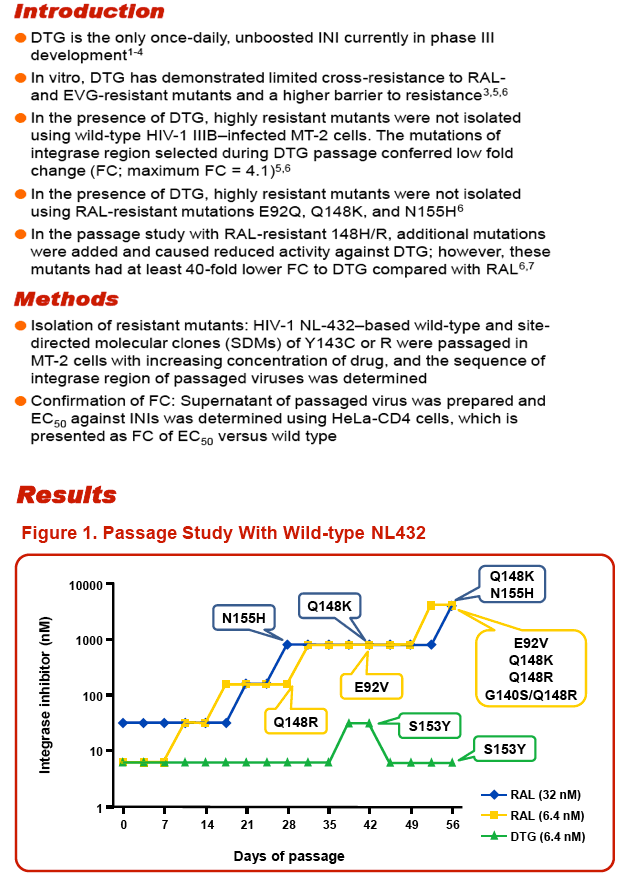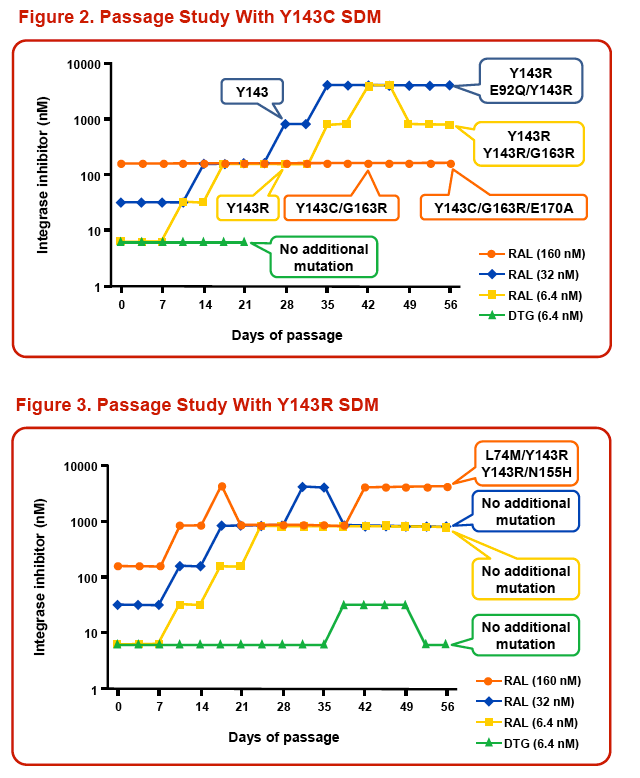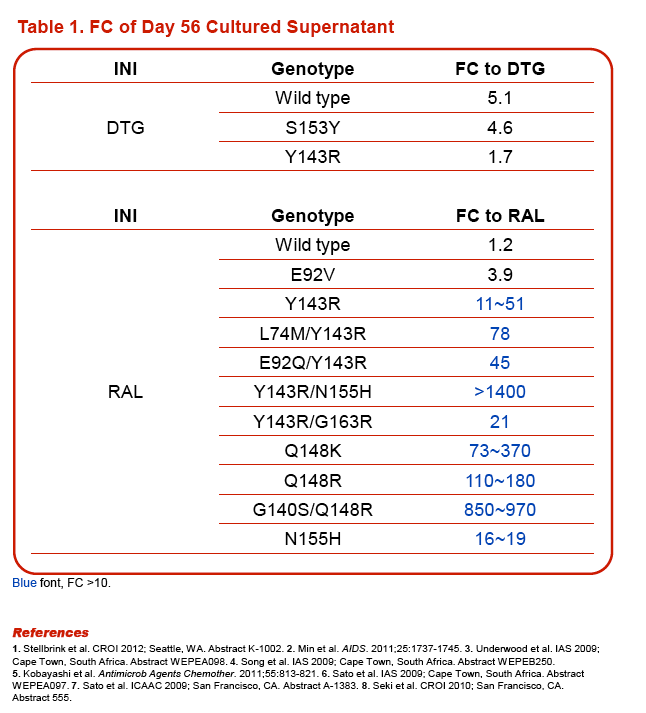 |
 |
 |
| |
High Barrier to Resistance for Dolutegravir (DTG, S/GSK1349572) Against Raltegravir-Resistant Y143 Mutants: An In Vitro Passage Study
|
| |
| |
Reported by Jules Levin
International Workshop on HIV & Hepatitis Virus Drug Resistance and Curative Strategies; June 5-9, 2012; Sitges, Spain
T Seki, M Kobayashi, S Miki, E Akihisa, A Suyama-Kagitani, S Kawauchi-Miki, T Yoshinaga, T Fujiwara, A Sato
Shionogi & Co, Ltd, Osaka, Japan

Abstract
Background: Dolutegravir (DTG, S/GSK1349572) is a once-daily, unboosted integrase inhibitor (INI) with limited cross-resistance to other INIs in vitro and is currently under Phase 3 clinical development, which includes investigation of subjects with raltegravir (RAL) resistance (VIKING study). Three main pathways (Y143, Q148, N155) of RAL resistance have been described; we have previously reported a high barrier to resistance in an in vitro passage study starting with the RAL-resistant associated and main pathway mutations E92Q, Q148H/K/R, and N155H. Here we report on an in vitro passage study starting from the remaining main pathway mutant, Y143C/R.
Material & Methods: Wild-type HIV-1 infectious molecular clone NL432 and RAL-resistant site-directed mutants (Y143C or R) were passaged for 56 days with INIs in MT-2 cells. We investigated the anti-HIV activity (EC50) against viral pools using HeLa-CD4 cells carrying a reporter ß-galactosidase gene driven by HIV-1 LTR. Fold change (FC) was calculated as a ratio of EC50 to that of wild type.
Results: An initial concentration of 32 nM of DTG completely prevented replication of Y143C/R. With an initial concentration of 6.4 nM DTG, Y143R could replicate, but no additional amino acid substitutions were detected during the passage. Y143C also could replicate, but only for a maximum of 3 weeks; these viruses did not accumulate additional substitutions. In the case of RAL, viral replication of Y143C/R occurred in an initial concentration of 160 nM-starting from Y143R, L74M/Y143R (FC = 78) and Y143R/N155H (FC = >1400) were isolated at Day 56, whilst when starting from Y143C, Y143C was replaced by Y143R (FC = 11-51) in some wells at Day 28. E92Q/Y143R (FC = 45), Y143R/G163R (FC = 21), and Y143C/G163R/E170A were isolated at Day 56.
Conclusions: DTG (at 32 nM) prevented viral replication of Y143C/R completely; no additional substitutions were observed during passage. Our results are consistent with the outcome of the VIKING study, in which all subjects who had Y143, N155, or Q148 single mutants achieved the primary endpoint at Day 11 (18/18 [100%] in Cohort I and 12/13 [92%] in Cohort II). DTG is thus expected to be a potent and durable therapy for subjects with mutations at position 143 in HIV integrase.



|
| |
|
 |
 |
|
|